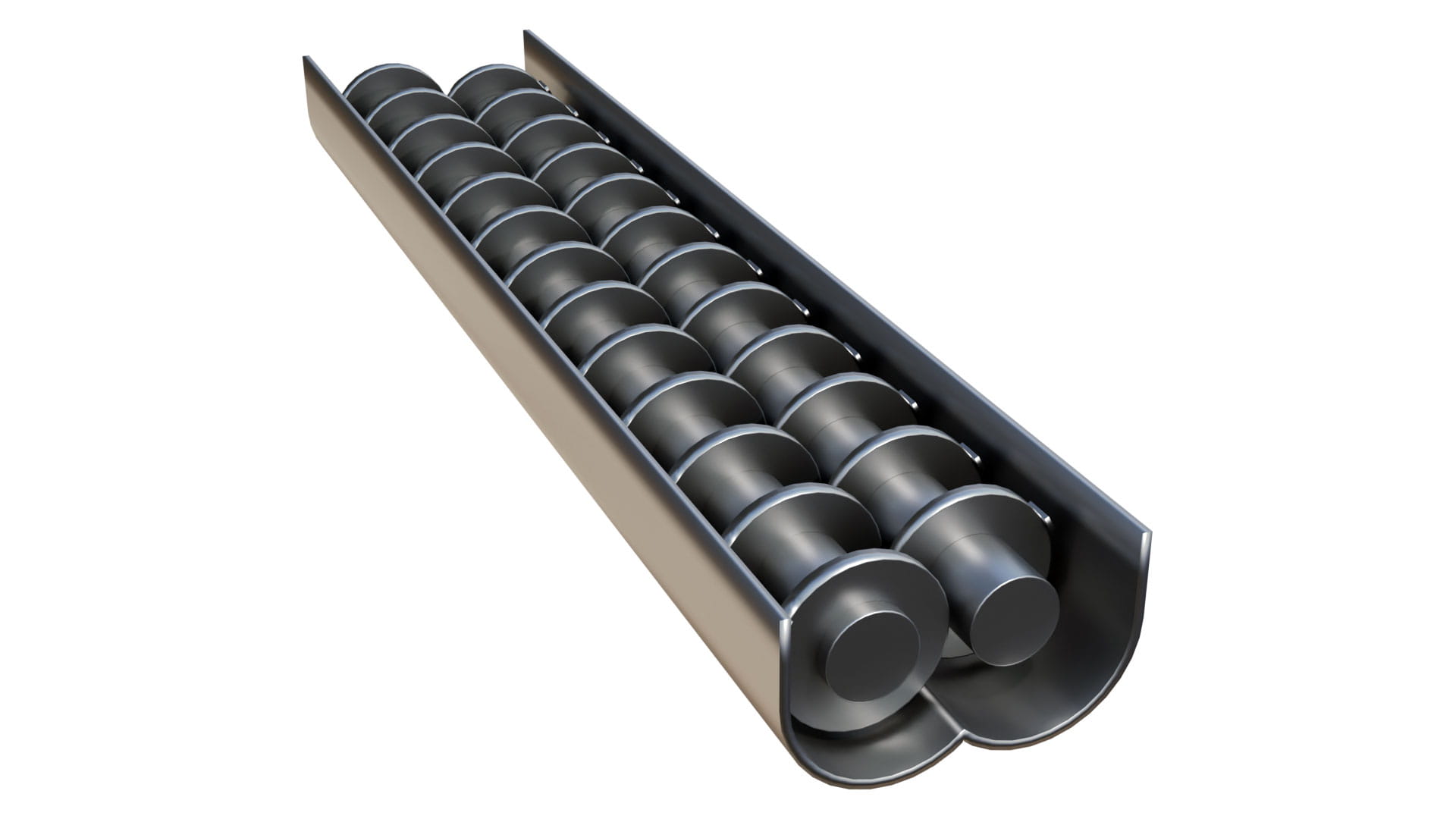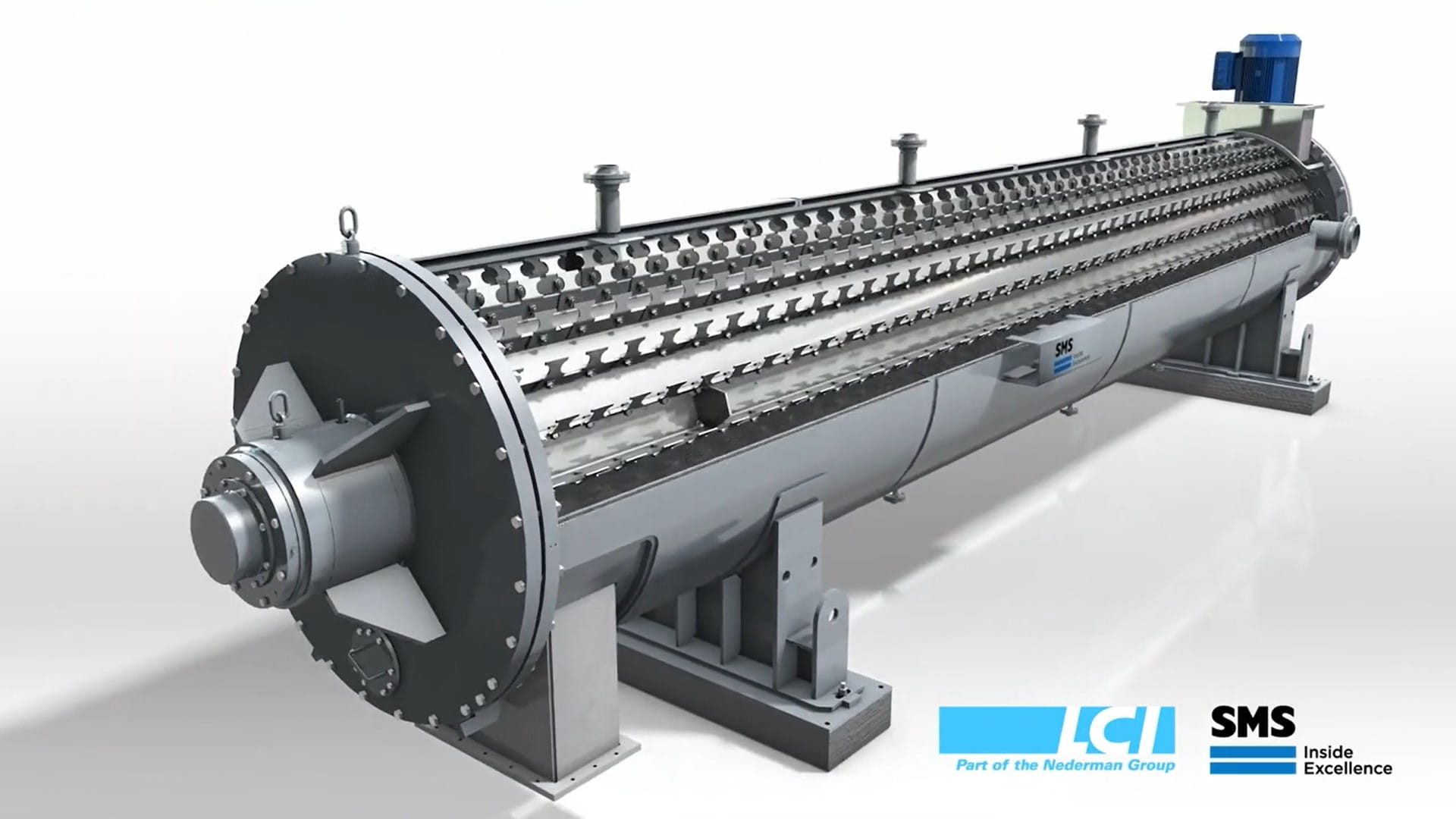
| No Complex Feed System | ✓ |
| Small Airflow | ✓ |
| Single Rotating Auger | Χ |
| Slow Turning Auger | ✓ |
| Auger Designed for Life | Χ |
| No Heating Medium in Auger | Χ |
| No Auger Synchronization | Χ |
| Less Electrical Usage | ✓ |
| Lower Thermal Energy Usage | Χ |
| Single Drive for Air/Vapor | ✓ |
| Continuous Operation | ✓ |
| Lower Cost of Maintenance | Χ |
| Easier to Maintain | Χ |
| Higher Frequency of Maintenance | ✓ |
| Small Horizontal Maintenance Space | ✓ |
| Small Vertical Maintenance Space | Χ |
| Automatic Sludge Cleanout | Χ |

| No Complex Feed System | ✓ |
| Small Airflow | ✓ |
| Single Rotating Rotor | ✓ |
| Slow Turning Rotor | Χ |
| Rotor Designed for Life | ✓ |
| No Heating Medium in Rotor | ✓ |
| No Rotor Synchronization | ✓ |
| Less Electrical Usage | Χ |
| Lower Thermal Energy Usage | ✓ |
| Single Drive for Air/Vapor | ✓ |
| Continuous Operation | ✓ |
| Lower Cost of Maintenance | ✓ |
| Easier to Maintain | ✓ |
| Higher Frequency of Maintenance | Χ |
| Small Horizontal Maintenance Space | Χ |
| Small Vertical Maintenance Space | ✓ |
| Automatic Sludge Cleanout | ✓ |
Paddle Sludge Dryers (also referred to as Screw Dryers) and Thin Film Sludge Dryers have both successfully dried municipal wastewater sewage sludge for many years. These dryers operate on a similar drying principle but have a different method of operation.
Paddle Sludge Dryers and Thin Film Sludge Dryers both use a heated surface to transfer heat indirectly to the sludge and evaporate the water using little airflow (known as indirect drying/conduction). The principle is like boiling water in a pot or cooking in a frying pan. Both dryers typically use steam or thermal oil as their heating medium.
Using this drying principle allows both dryers to have many of similar advantages compared to other technologies including:


The biggest difference between the Paddle Sludge Dryer and the Thin Film Sludge Dryer is the Paddle Dryer’s Dual Auger configuration versus the Thin Film Dryer’s Single Rotor configuration.
The Paddle Dryer uses a heated dual auger system (also called screws or agitators). The augers must be heated to increase the heated surface area in contact with the sludge, since the dryer has a “thick” sludge layer inside the dryer. Without heated augers the dryer would have to be much larger in size to dry the sludge.
Additionally, the dryer cannot clean sludge out automatically. It requires additional sludge to be fed to push sludge through the dryer. The sludge must be manually removed for servicing.
Advantages of the Dual Auger include:

The Thin Film Dryer uses a single rotor with blades. The purpose of this rotor system is to create a “thin film” of sludge for an efficient heat transfer without heating the rotor.
Advantages of the Single Rotor include:

The Thin Film Sludge Dyer and Paddle Sludge Dryer also significantly differ in maintenance requirements. The Paddle Dryer has two main wear items, the augers, and the shaft seals. To service the augers on the paddle dryer:
This requires:

In contrast to the Paddle Dryer, the Thin Film Dryer has simple bolted-on blades as wear parts. The process to replace the blades is as follows:
The maintenance does not require:
While the Paddle Dryer auger’s useful life can vary, they must be replaced. They are expensive to stock at a facility and have a long lead-time to procure. This could force a long-term alternative disposal method with increased disposal costs. In contrast, while it is recommended to inspect and replace Thin Film Dryer worn blades once per year, they are small, easy to replace, and inexpensive to stock at the facility.
Paddle (Screw) Sludge Dryers and Thin Film Sludge Dryers have many features in common. They are both indirect dryers which use similar heating methods, and are less complex, have lower air flows, simpler maintenance and smaller footprints than other drying technologies.
The biggest difference between these dryers is the way the sludge is conveyed, either by a dual auger system with the paddle dryer or a single rotor with the Thin Film dryer. The positives and negatives of each system should be considered when deciding on the right dryer for your application.